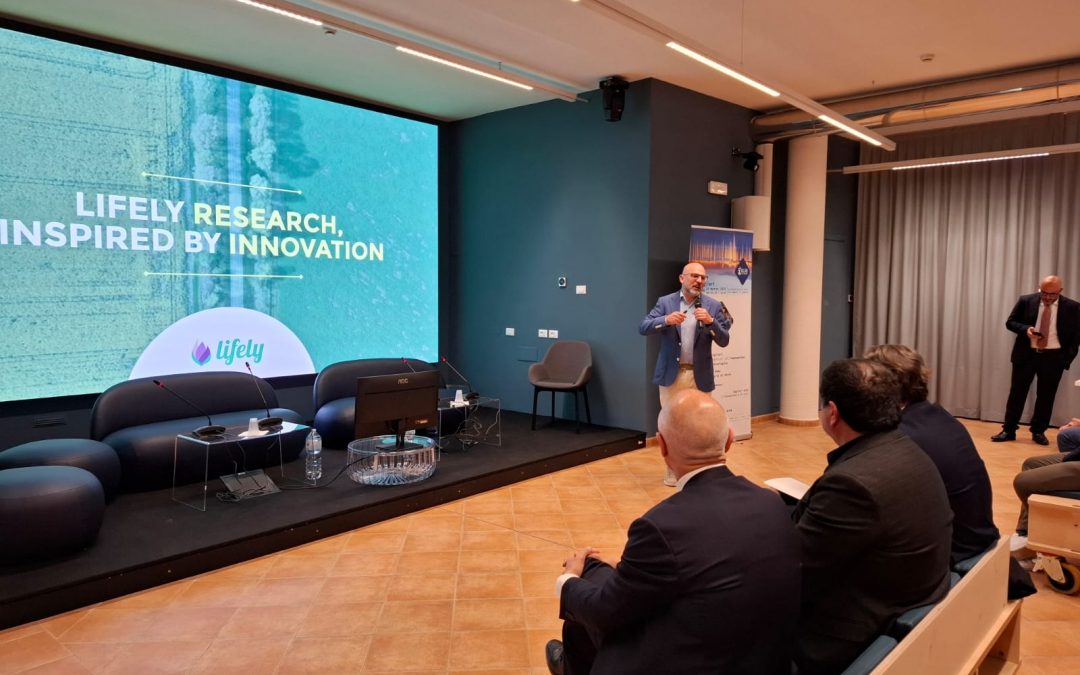Introduction
Last April 30, we were at the Ex-Vetreria di Pirri to participate in the event, “Mapping mobility: a comparison to innovate the future of transportation” organized by Greenshare. An opportunity for discussion between innovation, technology and institutions where we had the chance to present one of our latest solutions: Wi-COUNTER, developed by Lifely within the e.INS project, a smart platform designed to monitor and predict crowding on public transport in real time, improving the passenger experience and supporting a more sustainable and informed mobility.
PROBLEM: How is it possible to estimate the number of passengers without cameras?
In an increasingly connected urban environment, estimating real-time turnout on board public transportation is crucial to optimize service and improve the passenger experience, and unfortunately it is still not possible to install cameras in all vehicles because they are expensive, intrusive, and difficult to integrate on a large scale.
Therefore, we decided to approach the issue from another angle: WiFi signals.
Every smartphone constantly issues probe requests, or WiFi packets with which it searches for available networks. These signals can be passively “picked up” to estimate how many devices-and thus potentially how many people-are on board.
Our solution: Wi-COUNTER
WiCOUNTER is a low-cost hardware system designed to estimate the number of people on a bus in real time, without having to install cameras or use personal data.
It works as follows:
- Passive WiFi sniffing: detects probe requests issued by mobile devices.
- Intelligent filtering:
- Ignores signals with randomized MACs (a technique used by smartphones to protect privacy).
- Applies 1-minute observation windows to focus on “stable” signals.
- Uses multi-plot filtering to avoid overestimation caused by duplicate packets.
Hardware architecture
- Microcontroller with WiFi chip for sniffing
- Bluetooth Low Energy (BLE) to connect to Android app
- Built-in display (OLED or LCD) to monitor the number of detected devices in real time
- Rechargeable battery with more than 4 hours of battery life
- Intelligent power on/off management
In an increasingly connected urban environment, estimating turnout on board public transportation in real time is crucial to optimize service and improve the passenger experience, and unfortunately it is still not possible to install cameras in all vehicles because they are expensive, intrusive, and difficult to integrate on a large scale.
For this, we decided to approach the issue from another angle: WiFi signals.
Every smartphone constantly issues probe requests, or WiFi packets with which it searches for available networks. These signals can be passively “picked up” to estimate how many devices-and thus potentially how many people-are on board.
We also built an Android app that uses BLE technology to automatically connect to devices without manual intervention. Once the connection is established, probe request counts and related metadata are collected in real time, which is critical for estimating onboarding accurately and efficiently.
Validation
The Wi-Counter solution was tested in two different environments:
– controlled: meeting rooms with 10-100 people where automatic counts were compared with manual counts;
– real: in moving buses to try to calibrate RSSI variations due to obstacles and movement, continuous passenger entries and exits, and to verify the stability of the BLE connection.
WiCOUNTER represents a concrete first step toward more informed, flexible, and accessible public transportation. With real-time data on crowding, operators can:
- adjust ride frequency,
- inform passengers via app or display,
- optimize resources and reduce waste.

